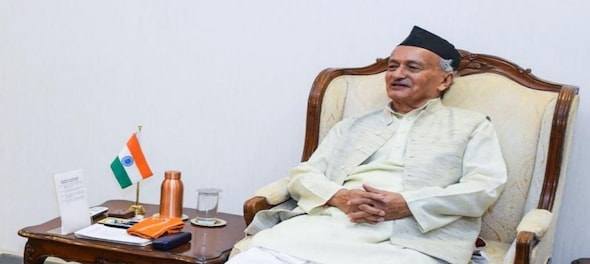
Maharashtra Governor Bhagat Singh Koshyari stirred a political slugfest in the state after his recent comments on Chhatrapati Shivaji Maharaj. Addressing a gathering on November 19, Koshyari said Shivaji was an 'icon of olden times' and personalities like Dr Babasaheb Ambedkar to Nitin Gadkari were the modern icons of the state.
During his school days, Maharashtra Governor said, when asked by a teacher to name their favourite leader and hero, people would name Subhas Chandra Bose, Jawaharlal Nehru and Mahatma Gandhi. If the same question is asked today, there would be no need to go out of the state to find these icons.
“Shivaji is an icon of the old era, I am talking about the new era. You will find (icons) right here. From Dr Ambedkar to Nitin Gadkari you will find them here," Koshyari said.
ALSO READ:
The remarks sparked outrage from both the descendants of the Maratha king and the opposition parties. Udayanraje Bhonsale, one of the descendants of the Maratha king, demanded that Koshyari be recalled by the Centre.
Sambhajiraje Chhatrapati, a direct descendant of Shivaji Maharaj, asked the Governor to apologise for his comments, while Shivendrasinh Bhonsle said it was an attempt to get public attention.
Interestingly, all three leaders are associated with the BJP.
Meanwhile, Shiv Sena (Uddhav Thackeray wing) spokesperson Anand Dubey said Shivaji will always be a source of inspiration for them.
Gujarati and Rajasthani controversies
This is not the first time Koshyari has courted controversy over his remarks. In July, Koshyari said Mumbai would not remain the financial capital of the country if Gujaratis and Marwaris were removed from the city. His remark drew criticism from several opposition parties, with former Maharashtra Chief Minister Uddhav Thackeray saying it is time to show him the famous Kolhapuri chappal, The Hindu reported.
ALSO READ:Gujarat assembly elections 2022: Key constituencies to watch in phase 1 polling on December 2
The office of the Governor later issued a clarification in which Koshyari said he was only speaking about contributions made by Gujaratis and Rajasthanis. He said the Marathi people contributed with their hard work to build Maharashtra.
Hostel naming
While inaugurating new buildings of the Mumbai University, the Maharashtra Governor had urged the varsity vice-chancellor to name the new international students' hostel after the freedom fighter Vinayak Damodar Savarkar.
The Mumbai Youth Congress said Savarkar was released by the British from prison following his relentless plea for mercy. Three student organisations, including Mumbai Youth Congress, Chatra Bharati Vidyarthi Sangathana and All India Students’ Federation (AISF), recommended that the hostel be named after Chhatrapati Rajarshi Shahu Maharaj.
Shivaji’s guru
During a programme in Aurangabad in March, Koshyari said Samarth Ramdas was the ‘guru’ of Chhatrapati Shivaji Maharaj, a comment that created a stir in the state.
“Many maharajas and chakravartis (emperors) were born on this land. But who would have asked about Chandragupta had there not been Chanakya? Who would have asked about Chhatrapati Shivaji Maharaj had there not been Samarth (Ramdas),” said Koshyari.
Historians believe Brahmins installed Ramdas as the guru of Shivaji Maharaj to take credit for the work of Shivaji. However, contemporary important historical texts have no mention of Ramdas, Indian Express quoted historian Shrimant Kokate as saying.
Savitribai Phule comment
A video of Koshyari went viral in March this year in which he is seen mocking the child marriage of social activists Jyotirao Phule and Savitribai Phule. Savitribai got married at the age of 10 to Jyotirao, who was then 13. “Now imagine, what would the boy and girl have been doing after marriage. What would they have been thinking?” the Governor said.
When Savitribai and Jyotirao got married in 1840, child marriage was a common practice in India, claimed leaders. Savitribai is credited to have started the first school for girls in India at Pune’s Bhide Wada in 1848 despite opposition from conservative sections of society.
(Edited by : Sudarsanan Mani)
Check out our in-depth Market Coverage, Business News & get real-time Stock Market Updates on CNBC-TV18. Also, Watch our channels CNBC-TV18, CNBC Awaaz and CNBC Bajar Live on-the-go!


Telangana CM violated poll code, defer Rythu Bharosa payment, says Election Commission
May 7, 2024 9:01 PM
Lok Sabha Election 2024: How Indian political parties are leveraging AI
May 7, 2024 6:59 PM

